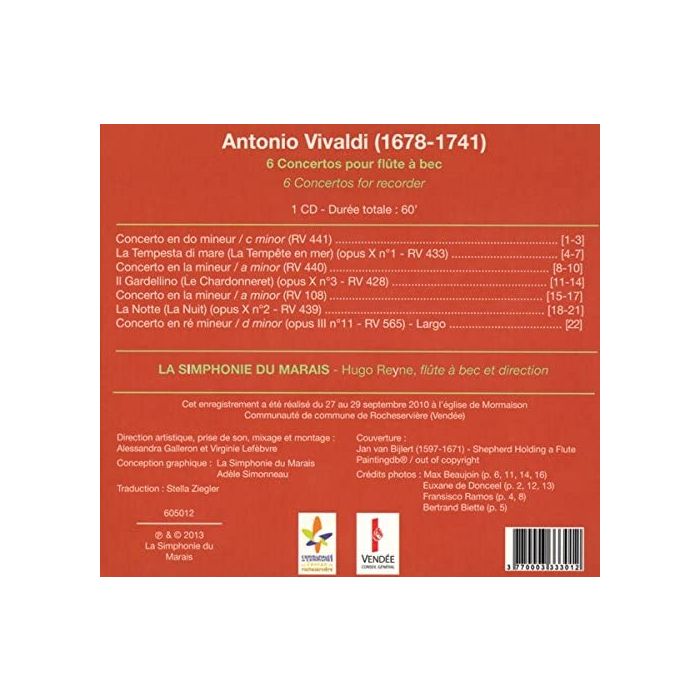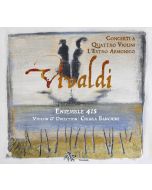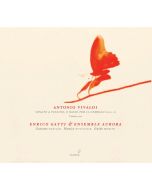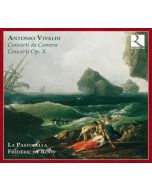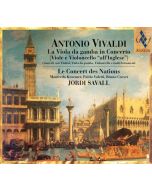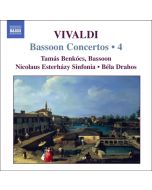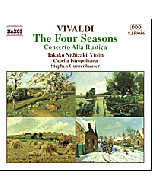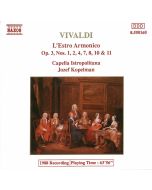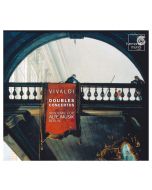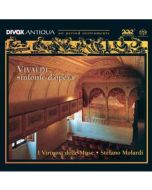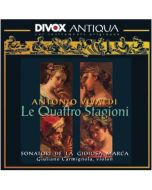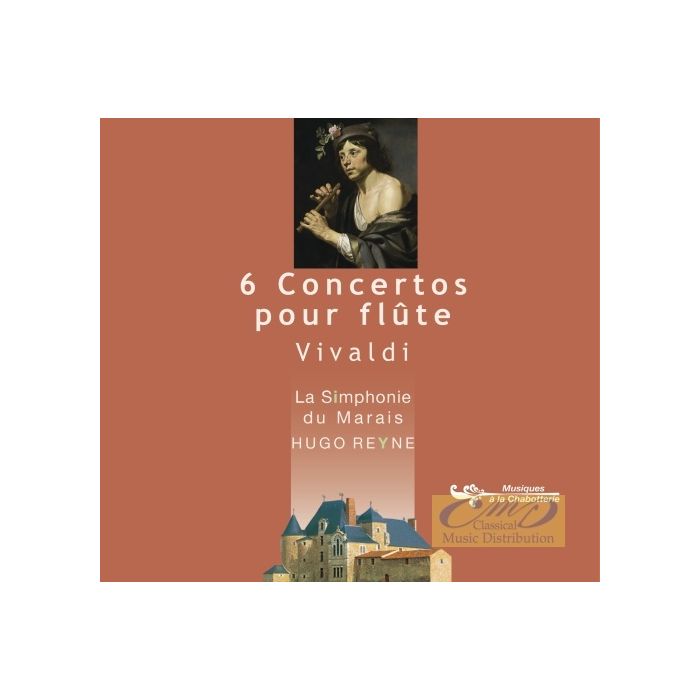
(Produkt nie został jeszcze oceniony)
kompozytor
Vivaldi, Antonio
tytuł
Vivaldi: 6 Concertos pour flûte à bec
wykonawcy
La Simphonie du Marais, Reyne, Hugo
nr katalogowy
SI 605012
opis
At age 10, Hugo Reyne strove with a small soprano flute to reproduce by ear Vivaldi's music gleaned on the radio or on television. At the age of 16 at the Radio House, he attended lectures by Frans Brüggen, a virtuoso flutist, a great pedagogue who is considered the father of the modern recorder. These moments marked Hugo Reyne with a lasting fascination for Vivaldi's music and made Frans Brüggen his first model, or else the master of thought, of his career as a musician. "To play a contemporary instrument of the composer adds to the charm of this music ... I really believe that Vivaldi must be given the poetry he deserves, respect what he has written and not distort his writing to make effects." Also, Hugo Reyne uses a contemporary 18 th century Gahn alto flute for the Concerto in C minor and alternately recorders made by the most talented musicians for the following concertos. A tribute to his teachers and to those who inspired him with their recorder playing, these Vivaldi concertos rocked Hugo Reyne's adolescence and limited his studies, his teaching career and his career as a teacher. flutist. "Nothing is ever an obstacle to a fluid, well-ornamented game, perfect of elegance and lavish in cantabile style." Roger-Claude Travers - Diapason - Awarded 4 Diapason "On the recorder and at the head of La Simphonie du Marais, Hugo Reyne is a connoisseur of ancient music and virtuoso himself". Frédéric Lodeon - Odeon Crossroads
• Konzert für Flöte, Streicher und Basso continuo F-Dur op. 10 Nr. 1 RV 433 "La tempesta di mare"
• Konzert für Flöte, Streicher und Basso continuo a-moll RV 440
• Konzert für Flöte, Streicher und Basso continuo D-Dur op. 10 Nr. 3 RV 428 "Il gardellino"
• Konzert für Flöte, 2 Violinen und Basso continuo a-moll RV 108
• Konzert für Flöte, Streicher und Basso continuo g-moll op. 10 Nr. 2 RV 439 "La notte"
• Konzert für 2 Violinen, Violoncello, Streicher und Basso continuo d-moll op. 3 Nr. 11 RV 565 (Auszug)
Works:
• Konzert für Flöte, Streicher und Basso continuo c-moll RV 441
• Konzert für Flöte, Streicher und Basso continuo F-Dur op. 10 Nr. 1 RV 433 "La tempesta di mare"
• Konzert für Flöte, Streicher und Basso continuo a-moll RV 440
• Konzert für Flöte, Streicher und Basso continuo D-Dur op. 10 Nr. 3 RV 428 "Il gardellino"
• Konzert für Flöte, 2 Violinen und Basso continuo a-moll RV 108
• Konzert für Flöte, Streicher und Basso continuo g-moll op. 10 Nr. 2 RV 439 "La notte"
• Konzert für 2 Violinen, Violoncello, Streicher und Basso continuo d-moll op. 3 Nr. 11 RV 565 (Auszug)
nośnik
CD x 1
wydawca
Musiques a la Chabotterie
data wydania
24.11.2016
EAN / kod kreskowy
3770003333012
79,00 zł
Produkt dostepny w niewielkiej ilości.
Wysyłka w ciągu 3 dni roboczych
Darmowa wysyłka dla zamówień powyżej 300 zł!
Darmowy kurier dla zamówień powyżej 500 zł!
sprawdź koszty wysyłki